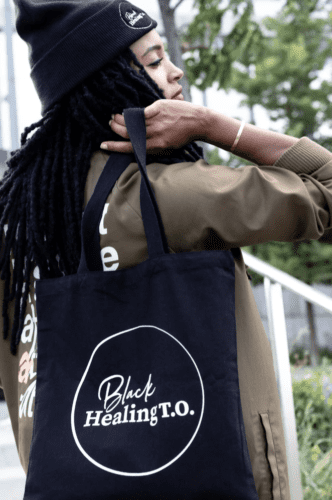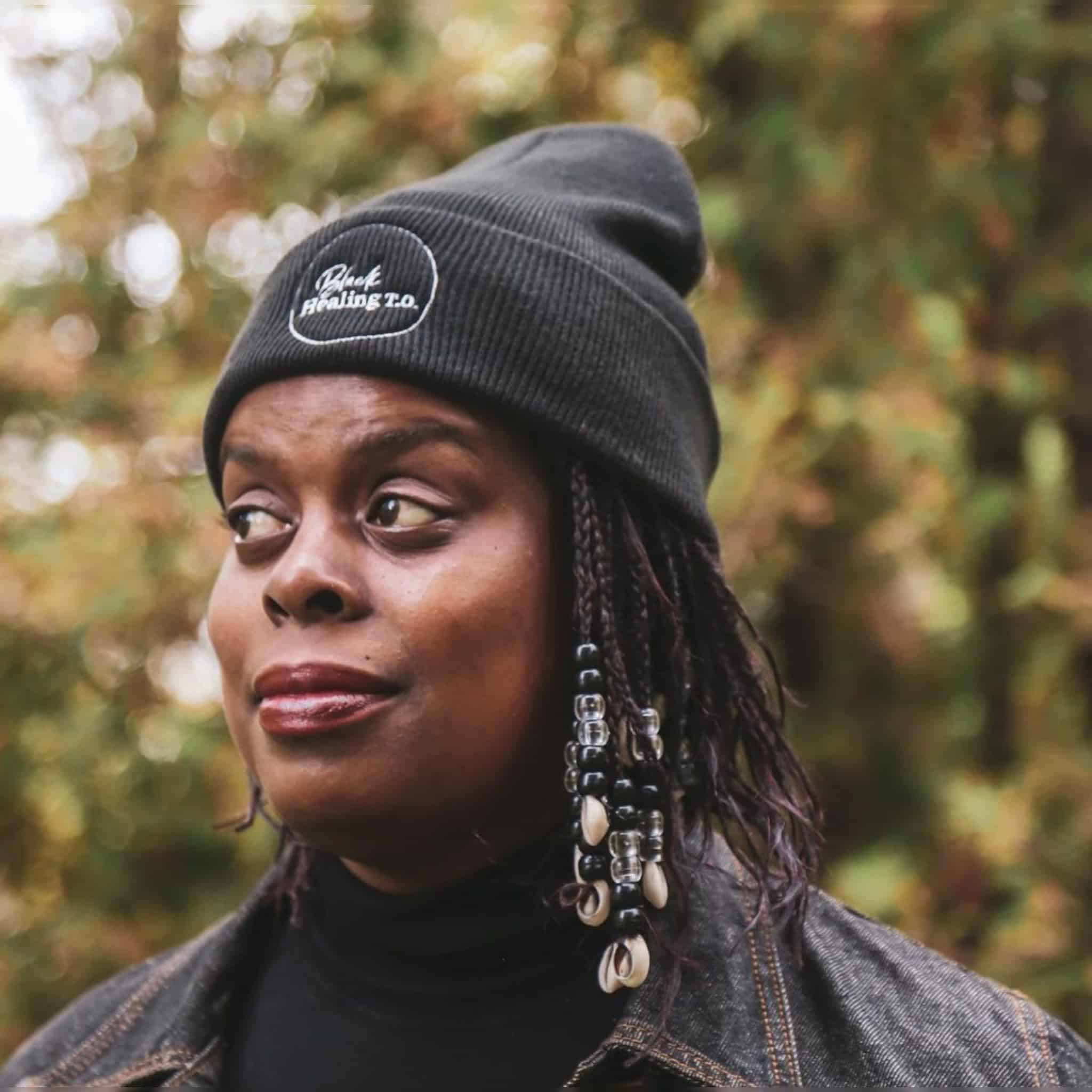Melissa Taylor launched Black Healing TO in late August, when it became abundantly clear there was a lack of mental health support in place that specifically served Toronto’s Black community. Right now she’s on a mission to raise funds to help pay for people’s therapy.
“As a therapist, I was seeing the need that people needed the support,” she tells us. Melissa also recognized that as an individual, she couldn’t help everyone, so she decided to model Black Healing TO after The Loveland Foundation. Founded by NYC-based author and activist Rachel Cargle, the organization allows individuals to seek out help within the safety and comfort of their own community, and connect to a therapist best suited to their needs.
“Before seeking institutional help of any sort, many BIPOC are forced to consider the potential realities and impacts of that,” says Melissa. “Will I be treated fairly? Will I be reported to the Children’s Aid Society? Will I end up in the back of a police car? Will I be murdered?” The creation of Black Healing TO means that there are now ways of finding professional help without having to deal with institutions, which enables Melissa to connect with those who’ve perhaps wanted and needed help, but who haven’t felt safe seeking it out.
While Black Healing TO is there to help connect people to therapists and provide them with subsidized or free therapy, it’s also about building a strong community that cares for one another. For Melissa, community is the core root of healing. “We are all connected with each other. Self-care is important but it doesn’t help you see the connection. There is an invisible thread that holds us together and collective care encourages others to do well and to succeed. Self care doesn’t really promote that.”
The word “community” may elicit visions of groups of people or perhaps a bustling community centre, but Melissa clarifies that “community” can be two people connecting in a meaningful way. “It can start with having a conversation about what are our common values and our common goals, and what are practical ways that are within our emotional bandwidth and capacity to support one another.” She suggests making a virtual coffee date with someone to share what’s on your mind or to discuss ways to encourage one another.
This may look a little different for everyone, but for Taylor it looks like sharing information with friends in order to help one another succeed. “One of the things that becomes embedded in us, largely because of capitalism, is that there’s this scarcity mentality, that there’s only space for this many people to experience something. A lot of that is just not true. Connecting with one another and sharing resources in a way that makes sense is community care. Sometimes that resource is time; time to listen, time to share ideas.”
Another thing that Melissa frequently addresses on the Black Healing TO IG feed is the idea of connecting with our ancestors, something she believes plays a critical role in healing. “Even if we aren’t part of a marginally oppressed group, we experience some level of intergenerational trauma. Neuroscience shows us that the experiences of generations before us are living in our body. A lot of that research has been done on trauma-related pieces, but if trauma can be passed on in our cells, then resourcing our strengths, our gifts, and resilience can also be passed down generations.”
So, what does this look like? How do we connect with our ancestors? “When I’m talking about communicating with our ancestors, I’m really talking about being quiet and still enough to notice that internal wisdom that’s within you,” she says. “And to recognize it not just as an individual, but that it comes from somewhere. In communicating with our ancestors, we really tap into some of that joy and creativity, and chances are there is a connection between those who’ve walked on this earth before you, right within you.”

Buy a Black Healing TO Tote, $40.
If you’re struggling to find joy or any kind of spark right now, and you don’t feel like you have a circle of friends or community to turn to, Melissa recommends that you begin asking yourself: What do I like? “I usually encourage people to think about something they like, and not necessarily something they’re passionate about, because sometimes that’s really hard to find something you’re passionate about when you’re depressed. But think about something that you have a mild interest in and then join a virtual meetup on meetup.com.” If you have the internet (not everyone does) Meetup has a group for everything out there, and it’s a great place to find people who share a common interest.
Taylor also suggests trying to locate a community hub in your neighbourhood, “A lot of those services have transitioned online or done creative things like outreach. If they notice seniors are part of their demographic and aren’t online, a lot of them have ways of connecting with community members who are isolated.”
Finding ways to offer service to the people, places, or things in your community is also a way to involve yourself with community care that will in turn, help you. “If people have the capacity, volunteering is a great way to get out of your head. But it has to be something that you care about, or else it will just feel like work.”
If you believe in what Taylor is building with Black Healing TO—we definitely do—consider donating to her ongoing fundraising efforts. “Black Healing TO focuses on making it possible for individuals to choose culturally competent therapists, so they can move towards discovering and reclaiming a sense of well-being and feeling secure in their body, mind, and soul.”




 Follow Us On Instagram
Follow Us On Instagram
